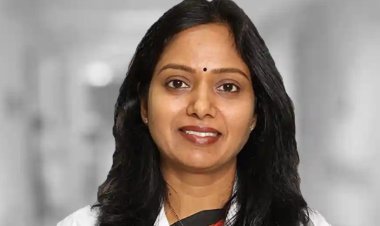Put care back into Health care

India can certainly do a lot to improve public health in the country. Spending a lot more money may seem to be the obvious answer. Money is not the only constraint, even though we have been crying ourselves hoarse that the government needs to double or triple its spending on health. There are many other things that need to be streamlined for India to ensure quality healthcare to its citizens.
Improving healthcare delivery systems ought to be the subject of intense policy deliberation and debate because the development of the country hinges, on the health of its citizens.
How is our children’s health?
But where does good health begin? It begins with our children. Unfortunately statistics in this regard are not too flattering. India is far behind than rest of the world in terms of number of malnourished children and surprisingly it is double than that of Sub-SaharanAfrica.
![]() Almost half of all deaths of children under 5 is undernourished children.
Almost half of all deaths of children under 5 is undernourished children.
![]() 44% of children under the age of 5 are underweight
44% of children under the age of 5 are underweight
![]() 72% of our infants have anaemia
72% of our infants have anaemia
![]() Inadequate sanitation safe water triggers infection-malnutrition cycle.
Inadequate sanitation safe water triggers infection-malnutrition cycle.
If our children don’t get the right start to life, they will remain undernourished and under developed compared with the children in rest of the world. Where does this leave our future workforce? We will remain an unhealthy nation with human resources that function below par. Our physical strength, mental health and overall wellbeing are and will continue to be compromised. This has far-reaching consequences on the country’s economic and social development.
It’s clear that investing in the health is investing in the future. At the moment, the Indian government spends about 1.15% of its gross domestic product on health care. This needs to increase to at least 2.5 per cent over the next few years to make any appreciable difference. Bad health hampers performance, productivity and negatively affects human capital development. Given our federal structure, we need to ensure that health remains a priority for the central as well as state governments. The State and the Centre Governments need to work collectively to ensure the four main prerequisites of a good healthcare system: quality, accessibility, availability and affordability. Quality is driven by market forces, but when supply is limited as compared to demand, quality takes a back seat. The government and health regulatory bodies need to ensure that quality standards and minimum patient safety protocols are enforced.
The increase in public health spending should be accompanied by changes in where that money is spent. A substantial part of public spending should be channelized into primary health as committed in the health policy 2017. Offering better primary care will help reduce the number of cases where diseases or complications progress to a point where they require expensive and aggressive treatment at tertiary healthcare centres and cannot be cured.
For a national health system that works, we need more medical and nursing schools and thousands of health workers, particularly in rural areas. What is urgently required is a multi-layered, qualified, trained and committed workforce. We need a large number of health management professionals to run facilities and programs efficiently. The healthcare sector in India is one of the largest sectors both in terms of employment and revenue generation. It has grown at a compounded annual growth rate of 16.5% and is likely to be worth $280 billion by 2020.
But NSS figures over the last two decades show a decline in the share of public hospitals in treating patients. This could give monopoly to the private players to hike prices of diagnostics and medical treatment. High healthcare costs and lack of insurance coverage penetration often results in greater out-of- pocket expenditure for diagnosis, consultation and treatment. Still, people today prefer private healthcare despite its whopping cost because of the dismal quality and lack of accessibility and accountability of public healthcare system in both rural and urban India.
Clearly a lot needs to change. The doctor-to- patient, patient-to- bed, and equipment availability-to- utilization ratio need to improve. The unbridled rise in the cost of secondary and tertiary care treatment in urban areas need to be checked.
Communication and coordination skills among hospital staff and doctors, soft skills and time management, emergency health management, crisis management, and supply chain management need to improve drastically. A multi-prolonged approach is necessary, and its implementation needs to start immediately on fast-track basis.
Public intervention in healthcare delivery needs to include:
![]() Monitoring of both public and private delivery systems
Monitoring of both public and private delivery systems
![]() Ensuring authentic diagnostic facilities at affordable cost
Ensuring authentic diagnostic facilities at affordable cost
![]() Supplementing healthcare with better municipal services -- clean air and water, pest control, good sanitation and sewage systems, proper treatment of waste and including healthcare awareness and physical fitness in school curriculum to ensure preventive healthcare.
Supplementing healthcare with better municipal services -- clean air and water, pest control, good sanitation and sewage systems, proper treatment of waste and including healthcare awareness and physical fitness in school curriculum to ensure preventive healthcare.
A robust public healthcare system is essential for transforming the socio-economic trajectory of India. Institutions like IIHMR play a significant role in this regard. They can do this by providing trained manpower and through information technology by making doctors available for consultation long distance, maintaining digital individual and family health record and through providing good healthcare managers. Many problems arise because healthcare systems in hospitals and clinics are not managed well. We need people who are qualified and trained as hospital managers and who can take care of management related issues so that doctors can focus on providing clinical care which they are trained for.
Dr. Sumesh Kumar, Assistant Professor, International Institute of Health Management Research,Delhi
Dr Sanjiv Kumar, Director, International Institute of Health Management Research, Delhi

 Disclaimer: Welthi.com does not guarantee any specific results as a result of the procedures mentioned here, and the results may vary from person to person.
Disclaimer: Welthi.com does not guarantee any specific results as a result of the procedures mentioned here, and the results may vary from person to person.









